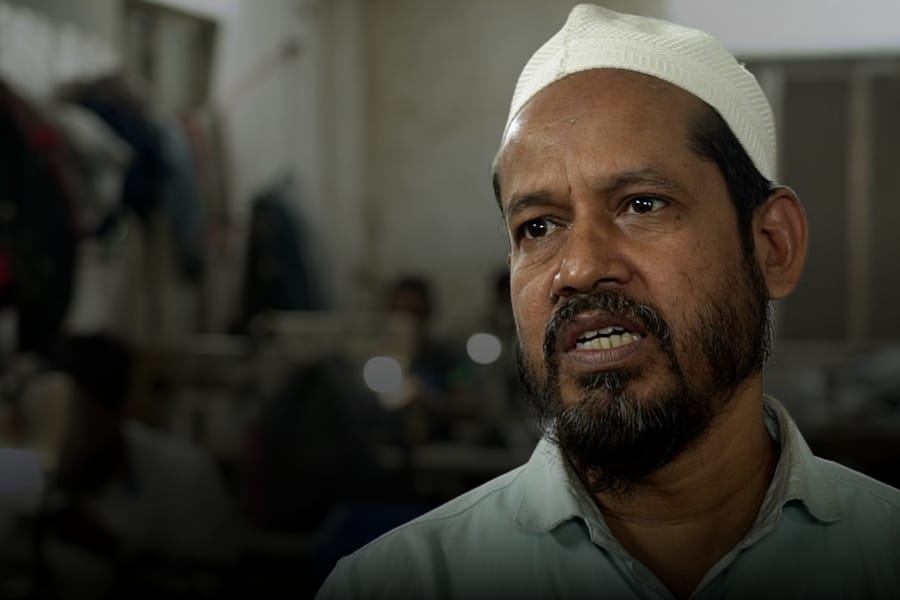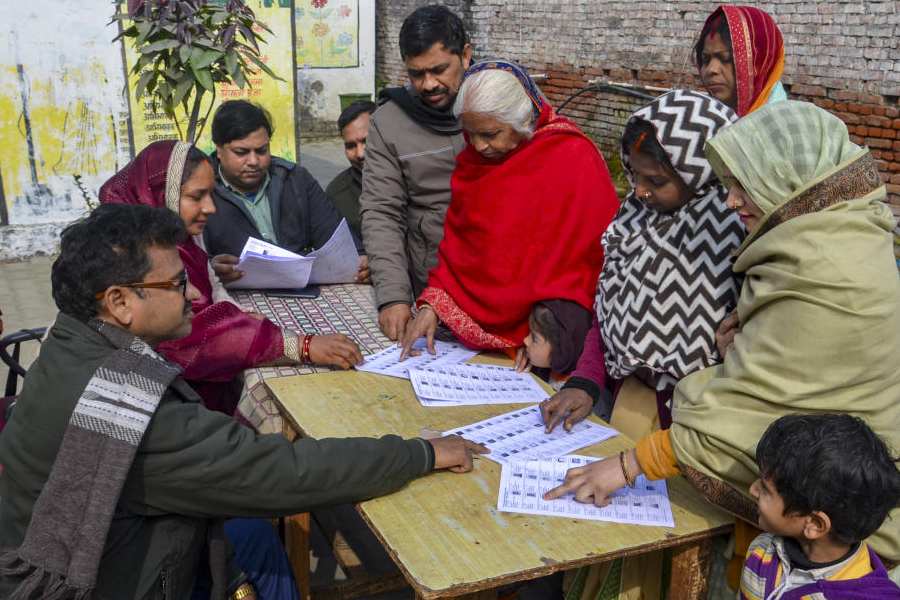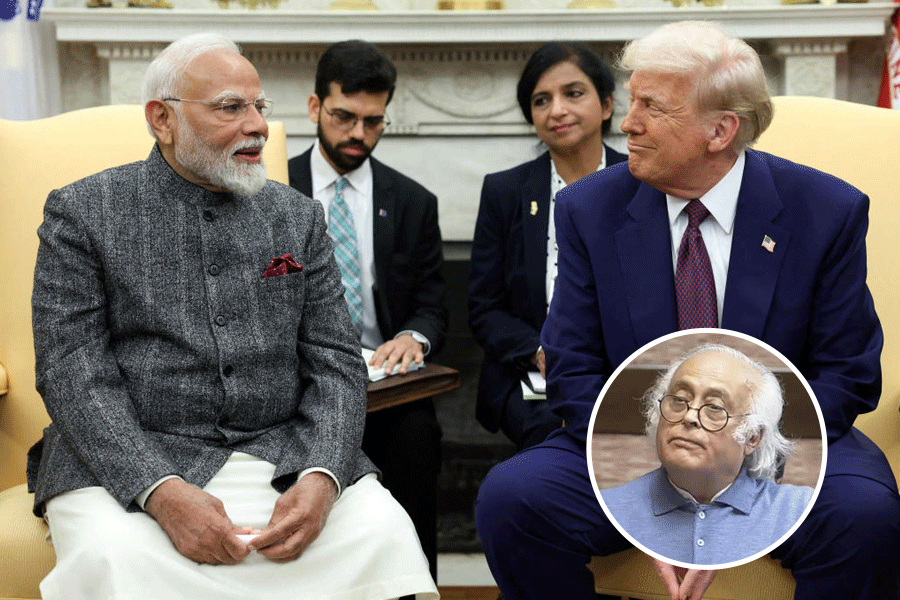|
|
Mohandas Karamchand Gandhi was by birth a Gujarati bania, but the admiration for his life and work transcended the boundaries of caste, language, religion and gender. He was a man who was trusted by women, a Hindu who reached out to befriend Muslims, and a suvarna who fought for the rights of the lower castes. Above all, he was a Gujarati who was admired by Tamils, Malayalis, Kannadigas, Maharashtrians, Hindiwallahs, Punjabis, Bengalis, Assamese, and Oriyas. No Indian, before or since, has had anything like the pan-Indian appeal commanded by Gandhi.
In an essay published in Subaltern Studies in the mid-Eighties, the historian, Shahid Amin, tracked the reception of Gandhi by the Awadh peasantry as he made his way through that region. Drawing on letters and exchanges published in a local Hindi newspaper, Amin explored the varying images of the Mahatma. In the eyes of the peasantry, he was a patriot, of course, but also a saint, magician, seer, and prophet.
I was reminded of Amin’s ground-breaking essay when reading a soon-to-be published volume of recollections of the Mahatma written by residents of Orissa. Between 1921 and 1946, Gandhi visited that eastern state seven times. He was met and escorted by members of the middle-class, but seen and heard by countless Oriyas of less elevated backgrounds, among them barbers, carpenters, peasants, and labourers.
Fortunately, some of those who met and heard Gandhi recorded their memories in print. The reminiscences come mostly from those who were themselves Oriya-speaking; but there are two accounts also by European women who were with Gandhi when he came to visit the province. Published in different places and at different times, they have been translated by various hands and collected and edited by the Bhubaneshwar-based literary scholar, Jatin Kumar Nayak.
Reading this anthology, I was struck by the respect and reverence commanded by Gandhi across different social classes. A group of students pawned a friend’s gold chain to pay for the bus tickets that would allow them to get a glimpse of the Mahatma. Others walked miles and miles for the same privilege. A barber woman, asked to shave Gandhi, borrows fine jewellery so that she makes the proper impression on the divine being in human form. Members of the Indian elite saw him in similar fashion too. In 1927, Gandhi was on a visit to Cuttack, when the sister of the great Bengali lawyer-patriot, C.R. Das, came down from Calcutta to help cook his meals. As she told a visitor: “I came here to meet and serve him. Other religious devotees go to Puri, to Benares, or to Rameswaram. Somewhere, at least once a year, I go to meet Mahatmaji; that is my annual pilgrimage!”
The second thing that struck me was Gandhi’s commitment to the abolition of untouchability. Everywhere he went in Orissa, he spoke out against a pernicious social practice that he regarded as a blot to Hinduism. He urged his upper-caste audiences to eat with the lower castes, to help educate them, and to allow them into their temples. As he put it in a speech in Balakati: “Human vanity lies at the root of untouchability. Like tuberculosis, untouchability consumes human beings. We must not allow ourselves to become victims of this disease. The whole world is watching us. If we do not wash this sin away, people will despise us.”
Ironically, and from his view perhaps regrettably, those who attended Gandhi’s meetings came to see him rather than to listen to him. A high-school student in Delang later recalled, “What he said no one seems to understand. But who had come to listen to his speech, anyway? The village women who had assembled there, one tying the end border of her sari to that of another, the daily labourer who had come there forgoing a day’s wage, the peasants who had rushed in there, neglecting their fields, would make little sense of Gandhi’s speech. They had all come only for a glimpse of the Mahatma. To have set eyes on him for once was all that mattered most [sic] to them.”
The people walked miles to see Gandhi, and Gandhi walked miles to speak to them. This book recounts how he traversed difficult terrain on foot, seeking to reach as many Oriyas as he could. He was a man of indefatigable energy, with a physical strength that his slight frame belied. His readiness to endure hardship, and the simplicity of his life more generally, are certainly in striking contrast to the preferences of those who seek to speak for and represent the people of India at the present time.
As I have noted, many of those who attended Gandhi’s meetings simply came to have his darshan; they did not show much interest in his social message. Others more actively opposed it. Thus the orthodox Hindus would not mix or mingle with Dalits, and excluded them from their schools and temples. Visiting Bari in 1934, Gandhi found that his local hosts accepted his “views on untouchability in principle but they dared not put them in practice for fear of objections from a few sanatani Brahmins”. The Mahatma ruefully observed that “while [the Indian people] braved the bullets of the British government, they remained scared of Brahmins”.
There are some wonderful moments in this collection. My own favourite is this contrast between the monumental ugliness of Gandhi’s human form and the sheer radiance of his human personality: “Gandhiji is ugly. A shaven but bristly scalp with a wispy topknot, a protruding red-blue under lip, big gaps where teeth are missing, large eyes standing out almost at right angles”. Then the account continues: “But I see his smile and think him beautiful — the kindest, broadest, sweetest smile! I am aware only of the wave of loving respect going out to him from the surrounding crowd, and of a radiance and immense kindliness flooding from him.” It comes from Frieda Hauswith, a European artist married to an Oriya, who — after days of trying — was granted the privilege of drawing a sketch of the Mahatma.
This book is published in the year that marks the 60th anniversary of Gandhi’s martyrdom. The editor offers it as a homage by the people of his state to the most remarkable Indian of modern times. That it certainly is, but let me end by offering my own homage to the editor. There is one kind of Indian scholar and writer, he (and sometimes she) who writes (and often thinks) in English, and who lives in or at least spends long stretches of the year overseas. There is another kind of Indian scholar, he (and sometime she) who is deeply engaged with the lived experience of the people of the state in which he is based. His knowledge of the culture and history of his province is encyclopaedic — he knows, it sometimes seems, not just every sect and every district in his state, but almost every individual and every stone too.
I suppose I fall firmly in the first category, but it has been my privilege (and good luck) to have known and been befriended by several scholars of the second. Among them are the Bengali Gautam Bhadra, the Pahadi Shekhar Pathak, the Tamil A. R. Venkatachalapathy, the Maharashtrian Sadanand More, and, not least, the Oriya Jatin Kumar Nayak. Whenever I meet or listen to one of these men I am simultaneously awed and humbled. The first sentiment comes from being exposed to the richness of their understanding and experience, the second from the painful awareness of my own inadequacies in this regard.
These scholars are based in their province, but by no means provincial. They are often fluent in English and keep abreast of the latest trends or fashions in global scholarship (although they refuse to be blown away by them). Like Gandhi himself, they are rooted cosmopolitans; like him they demonstrate that a love of one’s language or home state is perfectly consistent with an identification with the larger entity called India, and the still larger entity known as the human race.












